10 Iconic Floral Still Lifes You Need to Know
Flowers have long been a central theme in still-life painting. Each flower carries its own symbolism. For example, they can represent innocence,...
Errika Gerakiti 6 February 2025
Every great person has a prominent woman standing behind them, and that is true as every remarkable person was a child once. The woman standing behind is, of course, the mother. The mother is the beginning of beginnings, developing and raising a person. This article will walk you through how some great artists portrayed their prominent mothers.
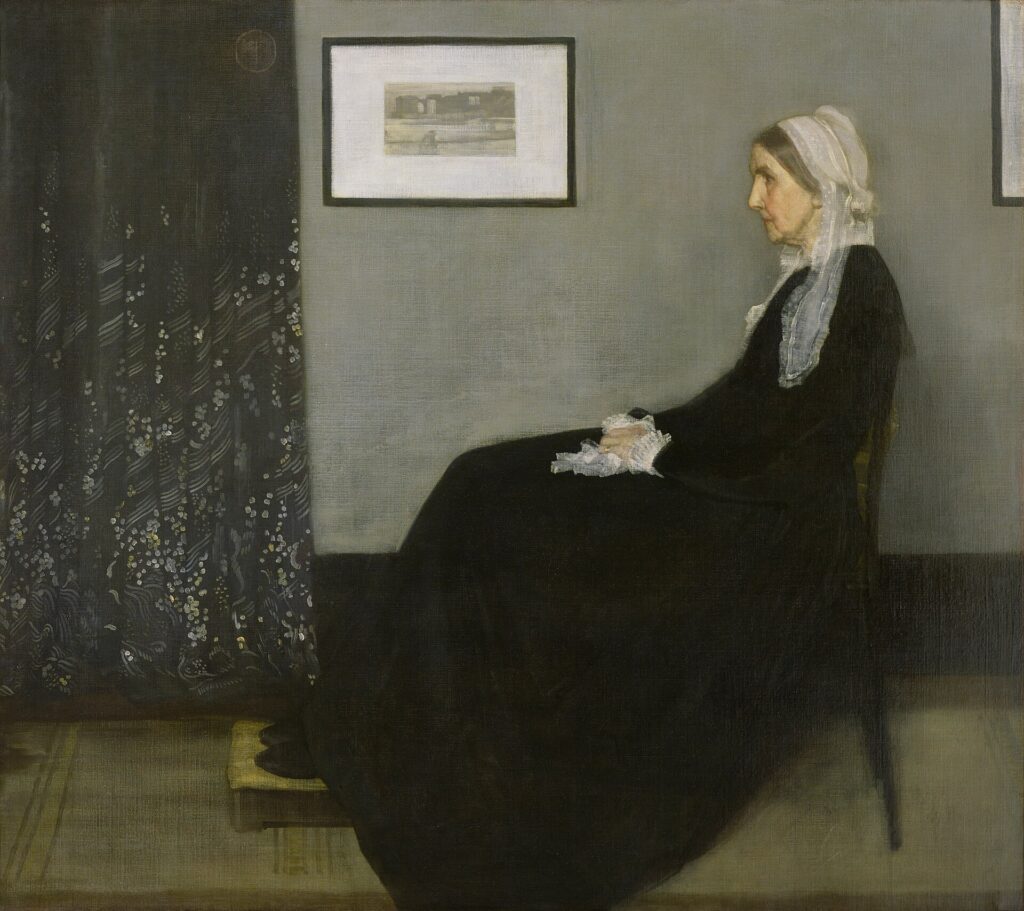
James McNeill Whistler, Arrangement in Grey and Black No 1: Portrait of the Artist’s Mother, 1871, Musée d’Orsay, Paris, France.
Starting with the most famous portrait of any artists’ mother, we have to start with the portrait of James McNeill Whistler’s mother. This painting, which has become both a symbol of motherhood in America and an integral part of culture, has been referenced in various fields from music (by Cole Porter) to movies (such as Mr. Bean). Whistler did not initially intend to create a portrait of his mother, but rather a portrait of a young girl. However, due to unforeseen circumstances, the model did not show up, and Whistler decided to depict his own mother instead. The figure of the mother served only as a means to experiment with lines, shapes, and colors, reflecting Whistler’s philosophy of art for art’s sake.
The symphony of shades of black, gray, and white, the rhythm of lines and shapes, create an impression of harmony and elegance. Does this help us to recognize the artist’s mother, Anna Whistler? What do we see in this painting? The overall color scheme, the pose of the 67-year-old woman, and her attire can all speak to primness, dryness, and wisdom. But what was Anna really like as a person?
Anna Whistler crossed the Atlantic Ocean eleven times in her lifetime living in America, Russia, and Great Britain, and supported her sons in every way possible. For James, she was a supportive art manager, tolerant of his lifestyle and friends, seeing him as a talented artist.
Despite the fact that Anna should not have appeared in Whistler’s painting, and despite the fact that the portrait was a pictorial arrangement for the artist, the artwork has become one of the most recognizable paintings in art history and is now, through its impact on the viewer, equated with Munch’s The Scream and Wood’s American Gothic.
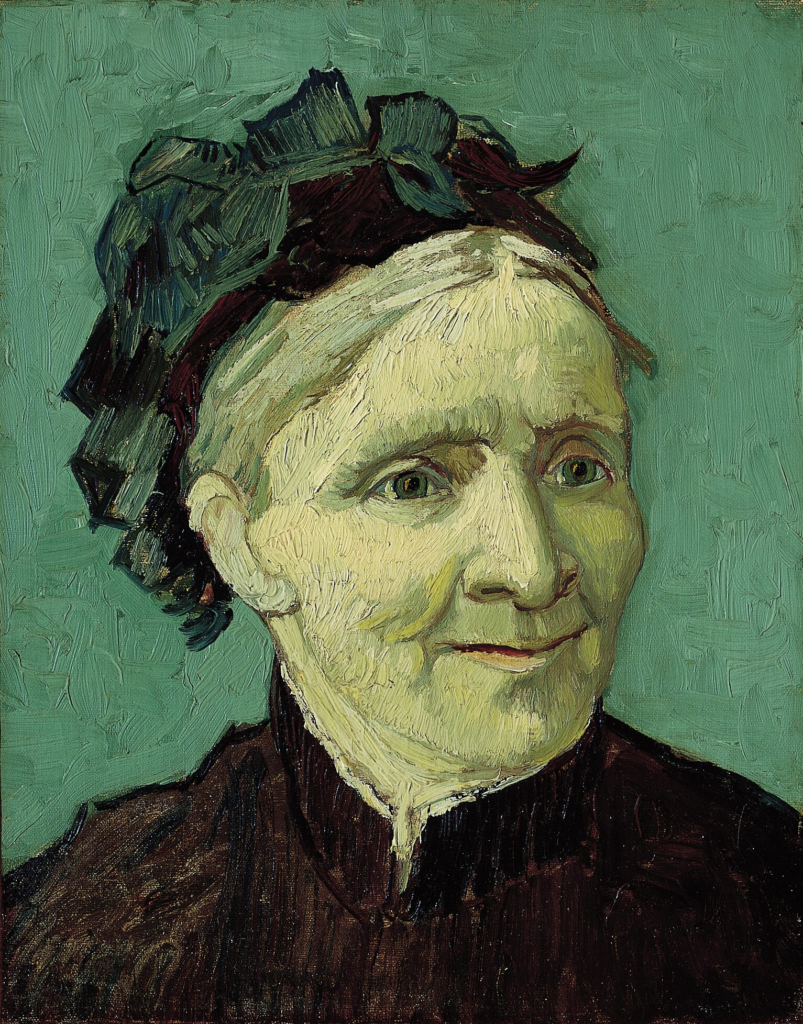
Vincent van Gogh, Portrait Of The Artist’s Mother, 1888, Norton Simon Museum of Art, Pasadena, USA.
Perhaps not the most famous painting by the outstanding Post-impressionist Vincent van Gogh is the Portrait Of The Artist’s Mother. Her name was Anna Cornelia Carbentus Van Gogh. The devout woman, who raised 6 children, was actually an amateur artist fond of watercolors and loved to paint plants and flowers. Perhaps Vincent Van Gogh’s love of depicting nature and drawing started with watching his mother.
Van Gogh made this portrait from a black-and-white photograph of his mother. In a letter to his brother Theo, he wrote: “I am doing a portrait of Mother for myself. I cannot stand the colorless photograph, and I am trying to do one in a harmony of color, as I see her in my memory”.
How do we see Anna Cornelia Carbentus Van Gogh? An elderly, respectable woman, there is something birdlike in her sharp eyes and nose. A slight smile and a penetrating look. Maybe this is how Van Gogh would like to see his mother’s face turned to him?
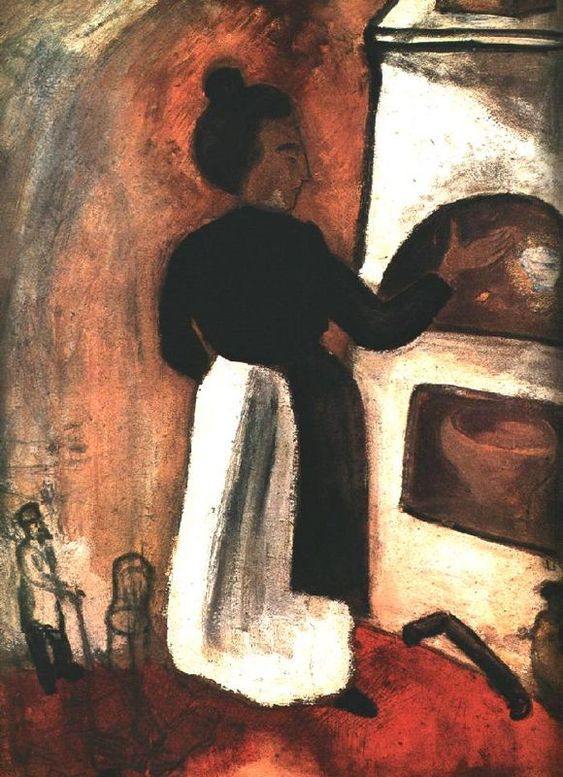
Marc Chagall, Mother by the Oven, 1914. Wikioo.
The large figure of a woman at the stove is Marc Chagall’s mother, Ida. In the memoir My Life, Marc Chagall wrote with tenderness and love about her. She ran the household, supervised her father, opened a grocery store, sang Jewish prayers at home, and was a mother not only to her children, but also to her younger sisters.
In the painting, the mother is depicted standing in front of the stove with a high hairstyle. The figure appears to be enlarged for several reasons. On the one hand, it could be due to the mother’s active role within the family. On the other hand, it may also be a reflection of Chagall’s own personal perspective, seeing her as a powerful and influential figure in his life. This detail is mentioned by Chagall in his memoirs, where he described her as “a queen” and himself as a “boy”.
Moreover, one can recall the theory of archetypes proposed by the Swiss psychologist Carl Gustav Jung. In this theory, the archetype of the mother holds a special place. It is possible that the portrait represents this archetype, as a great woman who provides life and warmth at home.
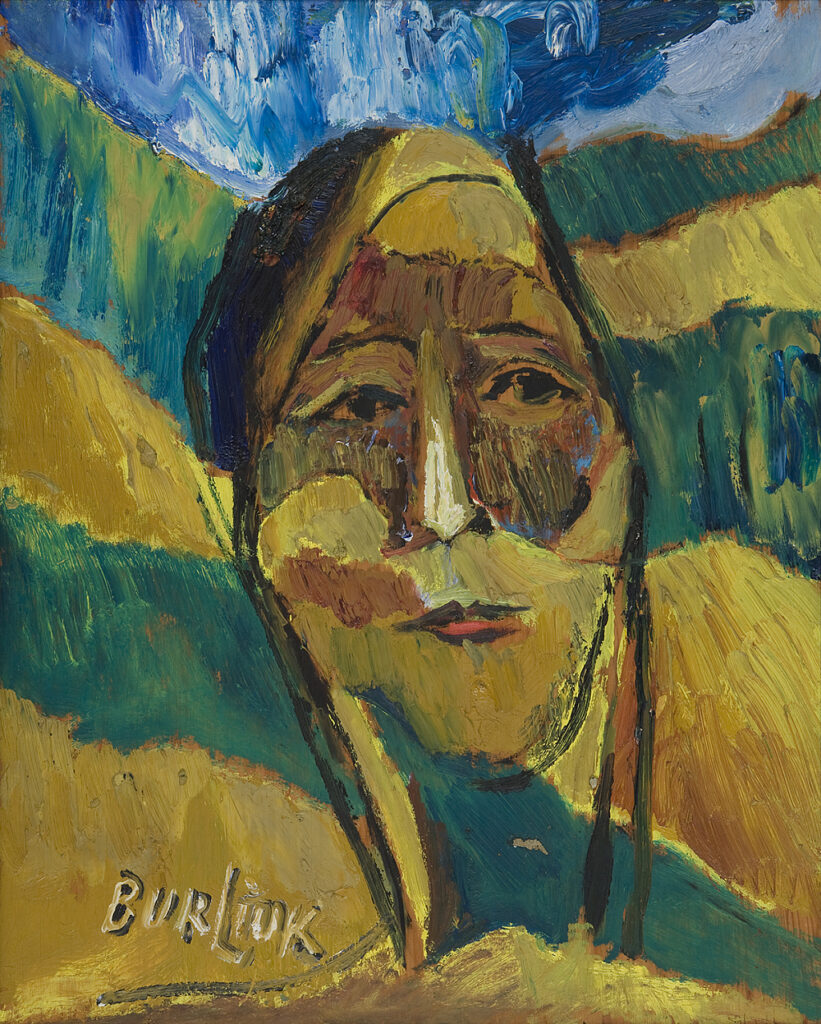
David Burliuk, Mother, 1911.
The father of Russian Futurism, David Burliuk, created a portrait of his mother in 1911 for the exhibition The Blue Rider in Munich. David and his siblings inherited their passion for drawing from their mother, Lyudmila, who had some artistic talent. Lyudmila encouraged her childrens’ love for art: drawing and poetry, she drew and read poetry to the children in the evenings. After noticing David’s talent for drawing, Lyudmila decided to support his artistic endeavors. Later, David Burliuk even exhibited the works of his mother with her maiden name on the labels – “Mikhnevich”.
In the portrait of the mother, the artist depicted a rather archetypal and simplified image of the maternal figure. The mother’s face appears more like an ancient mask against the backdrop of nature. Jung’s theories and the archetype of the maternal figure associated with nature, bearing fruit, and giving life are recalled here once again.
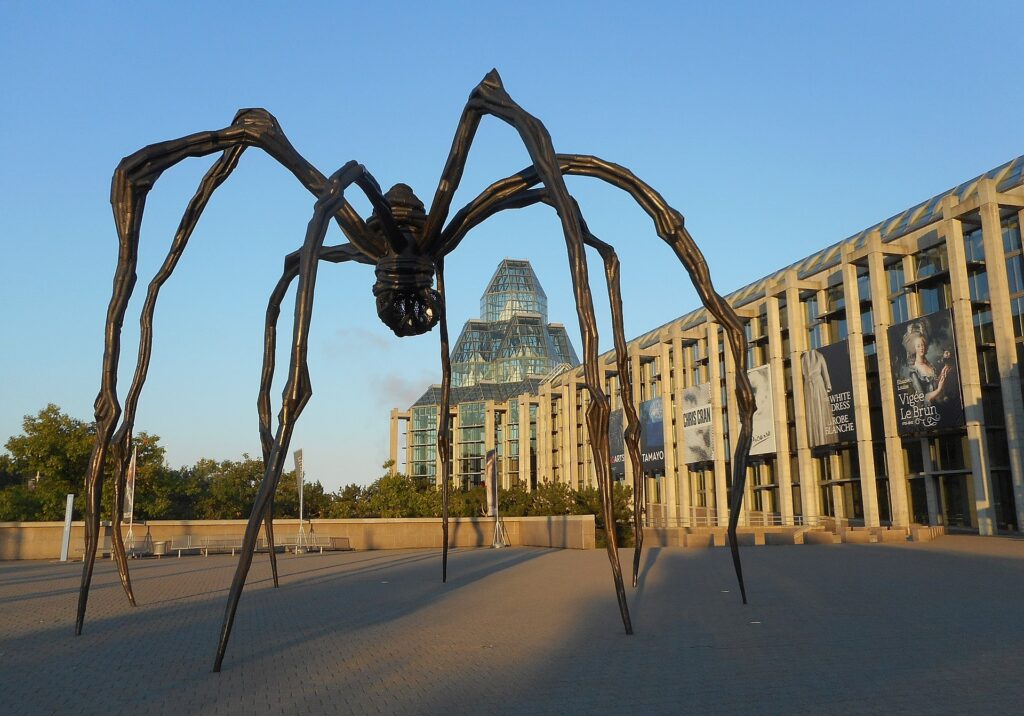
Louise Bourgeois, Maman, 1999, National Gallery of Canada, Ottawa, Canada. Photograph by Jeangagnon via Wikimedia Commons (CC BY-SA 4.0).
The artist and sculptor, Louise Bourgeois, depicted her mother as a spider sculpture. The choice of a spider as the subject was inspired by the fact that Joséphine Fauriaux, the artist’s mother, worked as a tapestry restorer. This occupation required her to perform meticulous work, similar to that of weavers, who create intricate designs using threads.
The spider is a repairer. If you bash into the web of a spider, she doesn’t get mad. She weaves and repairs it.
For Bourgeois, the spider represented an ode and admiration to her mother, as well as a symbol of protection. Additionally, the spider refers to the ancient Greek myth of Arachne, who, as a skilled weaver, challenged Athena and was eventually turned into a spider.
Thus, the frightening appearance of the spider is interpreted through the artist’s personal story and becomes the image of her mother.
The friend (the spider — why the spider?) because my best friend was my mother and she was deliberate, clever, patient, soothing, reasonable, dainty, subtle, indispensable, neat and useful as a spider.
Louise Bourgeois, Ode à Ma Mère, 1995.
DailyArt Magazine needs your support. Every contribution, however big or small, is very valuable for our future. Thanks to it, we will be able to sustain and grow the Magazine. Thank you for your help!